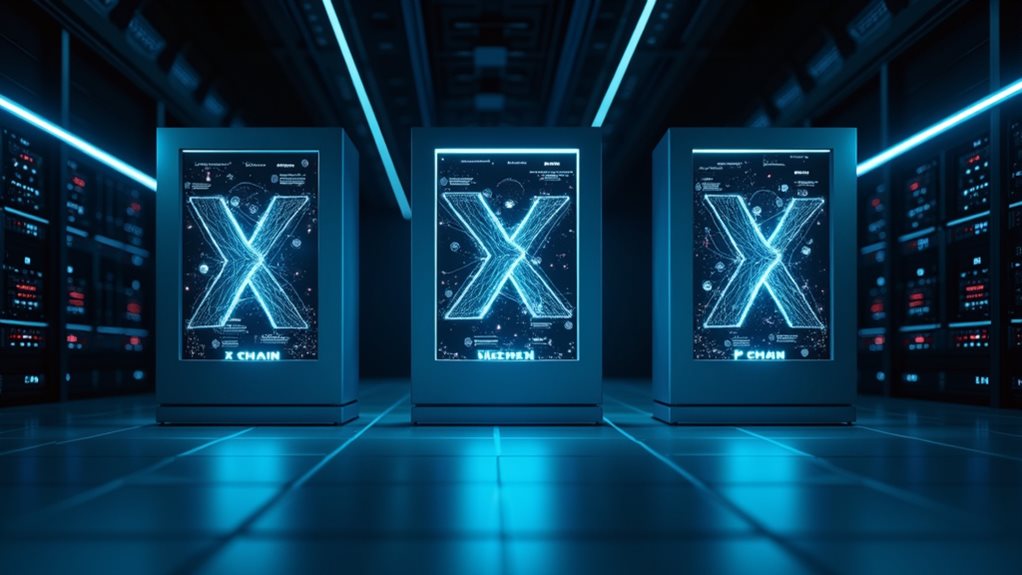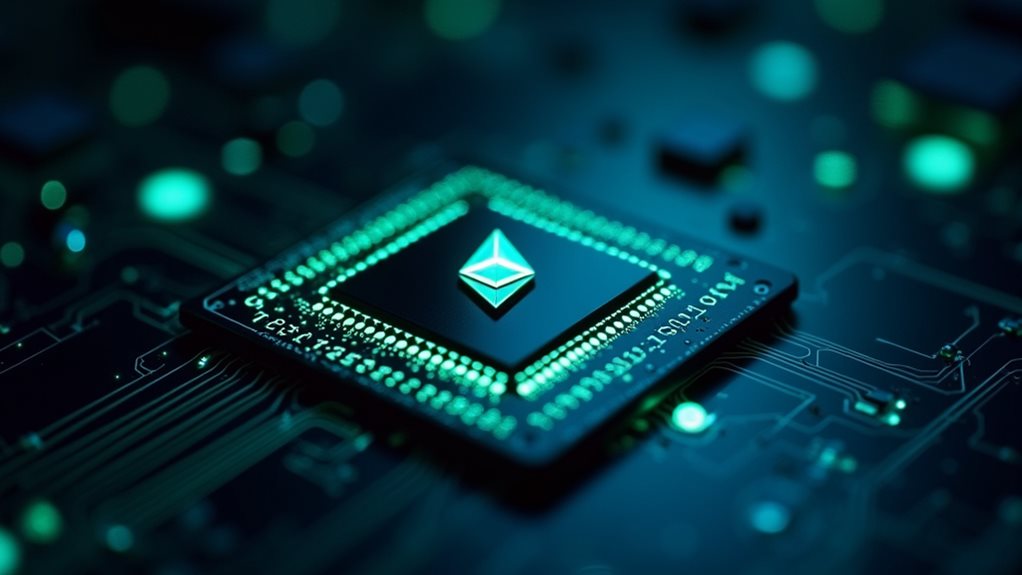Avalanche operates like a crypto Swiss Army knife, running three specialized chains that handle different tasks – from asset swaps to smart contracts. Launched in 2020, it processes a whopping 4,500 transactions per second using its Snow protocol and proof-of-stake system. Users stake AVAX tokens (minimum 2,000) to validate transactions, while the platform burns tokens to keep things scarce. With a $20.46 price tag and major backers like Andreessen Horowitz, this speed demon's just warming up.

Power, speed, and innovation collide in Avalanche, a groundbreaking blockchain platform that's turning heads in the crypto world. Launched in 2020 by the brilliant minds at Ava Labs – Emin Gün Sirer, Kevin Sekniqi, and Maofan "Ted" Yin – this isn't your grandmother's blockchain. It's a three-headed beast, operating on distinct chains that each serve their own purpose: the X-Chain for asset exchange, the C-Chain for smart contracts, and the P-Chain for network coordination. The platform requires users to stake at least 2,000 AVAX to become validators.
Think of it as a well-oiled machine where each part knows its job. The X-Chain handles the native AVAX token, while the C-Chain plays nice with Ethereum's Virtual Machine, making developers feel right at home. Meanwhile, the P-Chain keeps the validators in check and lets users create their own subnets. It's like a blockchain version of a Swiss Army knife – versatile and sharp.
Avalanche's three-chain system operates like clockwork, with each chain performing specialized tasks while maintaining seamless coordination across the network.
The real magic happens under the hood with Avalanche's consensus mechanism. While other networks crawl along, this one blazes through 4,500 transactions per second. That's not a typo. The Snow Family protocols and Proof of Stake system make it possible, and they do it while keeping things decentralized. Pretty neat trick.
AVAX, the platform's native token, isn't just another pretty face in the crypto crowd. With a hard cap of 720 million tokens and a burning mechanism that would make a pyromaniac proud, it's designed for scarcity. Validators stake it, users pay fees with it, and the network burns it like yesterday's news. The recent launch of the Avalanche Visa Card has expanded payment options for AVAX and stablecoins.
By 2025, predictions suggest AVAX could hit $32.10 – though anyone who claims to know exactly where crypto prices are heading is probably trying to sell you a bridge. What's clear is that Avalanche means business. It's hosting DeFi applications, supporting NFTs, and even offering enterprise solutions. The platform's EVM compatibility means Ethereum developers can jump right in without learning new tricks.
Current market stats show AVAX trading around $20.46, with a market cap of $9.65 billion and daily trading volumes that would make traditional finance folks sweat. But it's the practical stuff that really matters – those lightning-fast transactions and fees that won't force you to take out a second mortgage.
In a world where some blockchains move at the speed of molasses, Avalanche is proving that crypto can be both powerful and practical. No wonder the big-name investors like Polychain and Andreessen Horowitz jumped on board.
Frequently Asked Questions
What Are the Primary Risks Associated With Investing in Avalanche (AVAX)?
Investing in AVAX comes with serious risks. Price volatility can make your investment worthless overnight – that's crypto for you.
The network faces technical challenges like potential validator misconduct and network congestion. Smart contract bugs? Yeah, those could wreck things too.
Market sentiment swings wildly, and regulatory changes loom large. Plus, there's fierce competition from other blockchains.
Throw in some pump-and-dump schemes, and you've got quite the risk cocktail.
How Does Avalanche's Transaction Fee Structure Compare to Other Leading Cryptocurrencies?
Avalanche's fees are markedly cheaper than both Bitcoin and Ethereum.
After the December 2025 upgrade, transaction costs dropped 75% to just 1 nAVAX for smart contracts. Pretty sweet deal.
While Ethereum's fees spike during high traffic (ouch), and Bitcoin's costs vary wildly, Avalanche keeps things stable and affordable.
Plus, all fees get burned – reducing AVAX supply over time.
Its governance model lets users vote on fee changes, which is kind of a big deal.
Can Avalanche Tokens Be Staked Directly From Hardware Wallets?
No, Avalanche tokens can't be staked directly from hardware wallets – that's just not how it works.
Hardware wallets like Ledger Nano X need to team up with software interfaces to make staking happen.
Sure, you can store your AVAX securely on that fancy hardware wallet, but when it comes to actual staking, you'll need to connect it to compatible software wallets.
Think of the hardware wallet as the vault, not the investment manager.
What Programming Languages Are Supported for Developing Applications on Avalanche?
Solidity leads the pack for Avalanche development, especially on the C-Chain – no surprise there, it's the EVM standard.
Go gets plenty of love too, with developers using it for various Avalanche applications and tools.
Sure, Rust exists in the blockchain world, but it's not the star player here.
The real workhorses are Web3.js, Ethers.js, and AvalancheJS – they're the glue that holds everything together for network interactions.
Does Avalanche Have a Maximum Supply Cap Like Bitcoin?
Yes, Avalanche has a capped supply – originally set at 720 million AVAX tokens.
But here's the twist: it's now actually 715.75 million, thanks to their burn mechanism. Every transaction fee gets torched, permanently reducing the supply.
Pretty different from Bitcoin's rigid 21 million cap, though. Avalanche's community can actually vote on supply changes through governance.
Currently, over 405 million AVAX are floating around in circulation.






